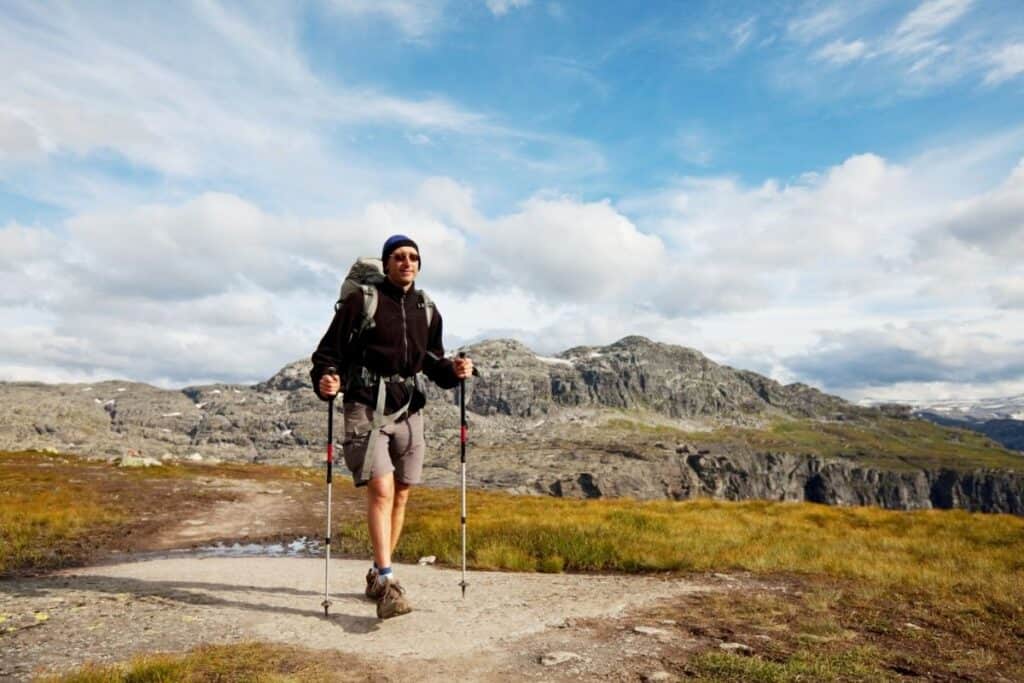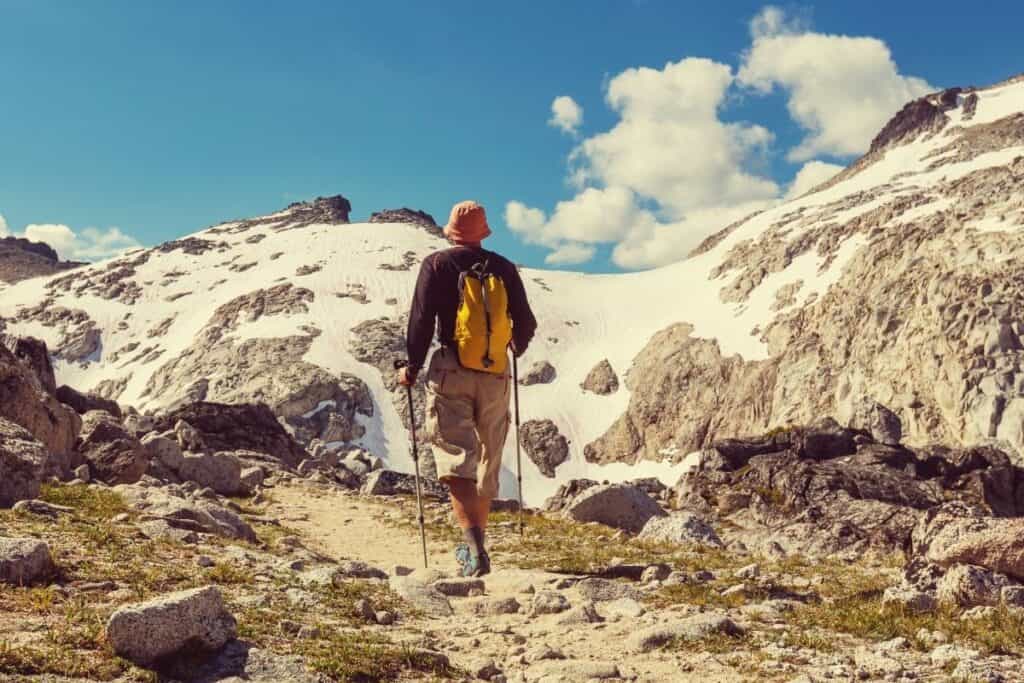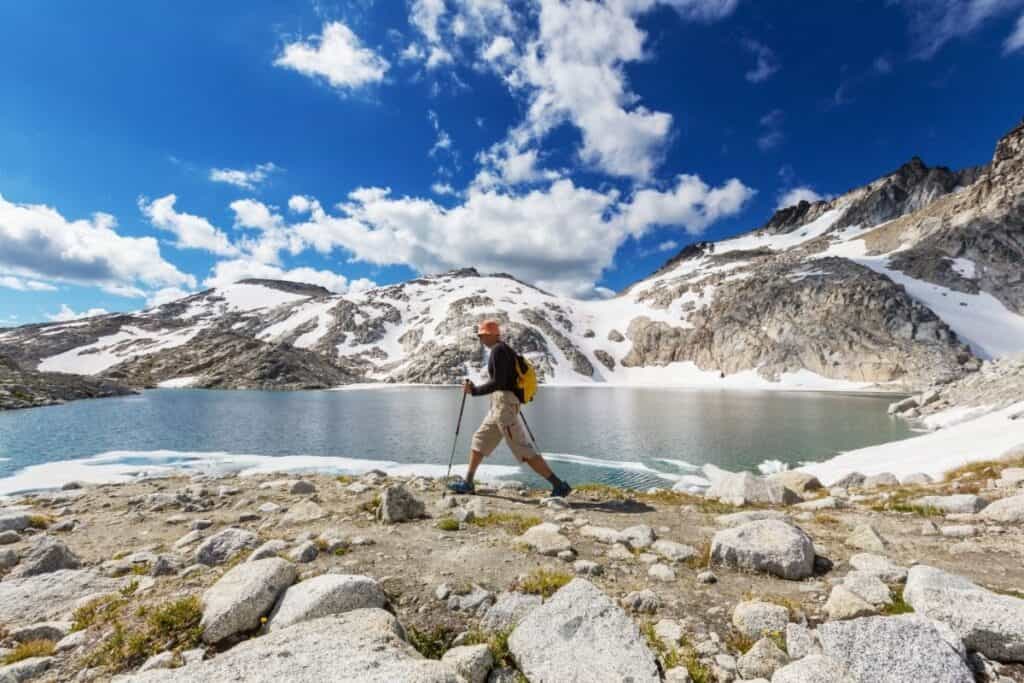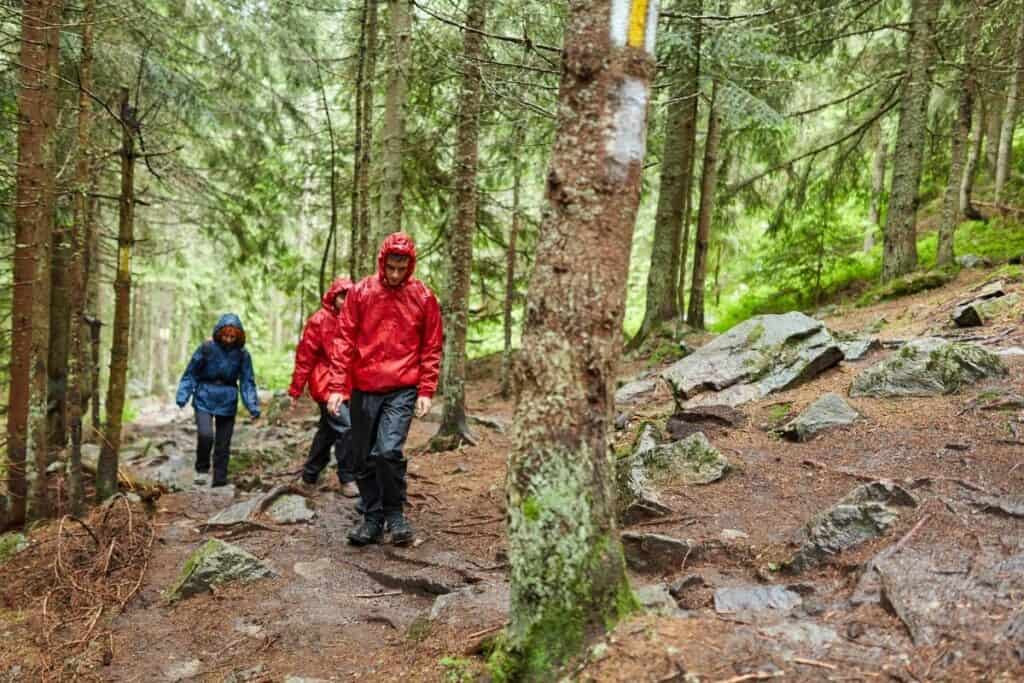
When you first get into hiking you may find yourself wondering what’s considered a long hike. After all, it’s great to set goals to push yourself towards!
Hikes that are seven miles or longer in total length are generally considered to be a long hike. In addition to length, a hike’s difficulty is also influenced by starting elevation, elevation gain, terrain, and your own fitness and experience level.
As I just alluded too, the trail mileage is just one of the factors that can make a hike feel “long”. Let’s jump in to see how these other factors can make a huge difference in the difficulty of a hike.
Factors That Make a Hike “Long”
Knowing that we all come from different background and capabilities, it’s important to assess the following factors when considering whether a hike is “long” or not.
This is especially important if you’ll be taking friends and family hiking with you whose definition of long may be very different from your own!
Fitness Level

Whether it comes from hiking or other forms of activity, having a solid base of physical fitness will help to prepare you for the trail. This could be anything from jogging, weightlifting, or group classes.
All of these activities train your body’s muscles, ligaments, and general physical capacity.
Compared to a sedentary individual who spends little to no time exercising, you will clearly be much better prepared for the trail!
While hiking itself is it’s own specialized form of activity that will take your body time to adapt to, the fact that you start with a higher base level of fitness will have you better prepared for the trail.
This means that you will likely be able to handle more mileage on the trail compared to someone who is untrained.
Of course, this does not mean that you cannot start hiking if you are not already in shape. It just means that you’ll want to start out a little slower and slowly increase your capacity!
Perhaps start with hikes that are only a mile long, and try slowly increase the mileage each couple weeks.
Elevation

This one is huge – possibly the most significant factor to consider when choosing where to hike and deciding whether it is too long or long enough.
If you live at a low elevation, hiking a few miles may feel easy peasy! However, that exact same length hike at 10,000+ feet is a completely different story!
The higher up in elevation you go, the less oxygen that there is to breathe.
This means that your heart and lungs have to work harder to supply your muscles with oxygenated blood, and makes the same amount of work more tiring.
Now there are actually two factors to consider when it comes to elevation:
- Starting elevation: The elevation at the start of your hike.
- Elevation gain: The elevation gained throughout a hike.
Number one is pretty straightforward in in that it’s simply the elevation e.g. 500 feet at the start of your hike. However, number two (elevation gain) can actually be measured in a couple different way.
There is net elevation gain which is usually calculated as the highest elevation point during a hike minus the starting elevation. For example, let’s say you hike to a 2,000 foot peak and started at 500 feet – that’s a net gain of 1,500 feet.
This number is what’s referenced in many cases or trail maps because it’s easier to calculate.
An alternate way to measure this is “cumulative elevation gain”. Because many hikes involve hills, you’re be be slowly going up and then back down, and then up again.
Cumulative gain would look to add up each of the “mini” climbs throughout a hike to account for all of the work that you do.
While this is certainly a harder to measure number, you can see how it would make a big impact on difficulty of a hike that would otherwise be hidden when only looking at net elevation gain.
For example, let’s say that you do that same hike where you start at 500 ft and hike to 2,000 feet i.e. 1,500 feet net elevation gain. But if along the way you gained 600 feet and then lost 100 feet and did that 3 times to reach 2,000 feet you’d have gained a cumulative of 2,300 feet!
Clearly, hiking 2,300 feet of gain is going to feel different than 1,500!
Now, my suggestion here is to not get crazy with trying to calculate these numbers for each and every hike. Just know that elevation makes a difference in the relative difficulty of a hike!
This is one reason why taking a look at a topographical map before your hike can be a good idea to better understand elevation gain and loss.
Experience

This one should be obvious, but we often forget that not everyone is as experienced on the trail. From children to urban adults to the elderly, many people are simply unaccustomed to conditions on the trail and may find even the simplest of hikes challenging.
The more time that you have spent on the trail, the better equipped that your body will be to handle it. Think of this as a hiking-specific form of fitness!
If you’ve done 5, 10, 15+ mile hikes in the past, then your body knows what to expect. Jumping into a 3-mile hike even when out of shape probably won’t phase you.
Age

When considering how long a hike is too long, you may also want to consider age. Age can cause a few complications, which might result in a hike being more strenuous.
The first thing to consider is that older people are more likely to have health complications, such as chronic pain and arthritis, which might decrease their mobility or work capacity.
The exception here is experience and fitness. I can’t tell you how many 60 and 70+ year old hikers that I’ve seen out lapping everyone else on the trail!
This is because they have spent their lives enjoying the mountains, and have built up an incredible base level of fitness. These years on the trail have left their joints, tendons, and muscles strong and able to conquer the trails with ease!
However, for those not experience and in shape – hiking can prove to be a far more strenuous activity. Aside from the physical exertion, older hikers may find the unstable surfaces of hikes to be a daunting task.
Similar to out of shape hikers, they will need to start with short and easy hikes in the beginning, and can slowly increase their length and difficulty over time.
In addition to the elderly, you’ll also want to slowly ramp up the intensity for young hikers as well. While they may have the energy to carry on for hours, their young bodies will need time to adapt to the trail as well.
Medical Factors

While a perfectly agile twenty-something might think of a mile’s hike as a breeze, someone with a physical disability might consider it a significant trek! Knowing the health of your hikers may help you determine how long is long.
While many people with asthma are entirely mobile and asthma comes in differing intensity levels, it may still pose a problem on longer hikes. If you have a hiker with asthma, make sure to pack an inhaler and ask them how they’re doing often.
People with other issues like nutrient deficiencies resulting from diet and constant dehydration might also find shorter hikes much harder.
Backpacks

This one is often skipped over in terms of planning, but the total weight you’re carrying can make or break a long hike.
Hikers who want to traverse long distances will need loads of materials. From water purifiers to tents to sleeping bags, the weight can pile up. And, the more weight you have, the more strenuous your hike.
If you’re carrying a lot of weight, you might want to consider taking shorter hikes every day to reduce your trip’s strenuousness overall. You can do this by spacing your total miles traveled out over a greater number of days.
Think of carrying a heavy backpack just like carrying extra body weight. If you’ve got the muscles to handle it, go for the full seven miles. But, if you’re a little bit stringier than some, you may want to slow it down.
The Advantages of a Long Hike
While a short hike can be relaxing and contemplative, long hikes are rewarding, fun, and a great source of exercise.
Long hikes often take hikers to places they’ve never been before. This can produce feelings of satisfaction at having discovered someplace that was previously unknown.
Long hikes also burn more calories, which can help you meet your weight-loss goal if you’re trying to get fitter.
Hiking also builds slow-twitch muscle and burns fat, which results in a more toned body with more visible muscles. If you’re trying to get some nice contours going on your muscles, consider long hikes as an alternative to an expensive gym membership.
One should also remember that long, overnight hikes hold starry nights, hours around a campfire, and afternoons spent in cool-watered swimming holes. For those who are unafraid to brave the long, dark nights, long overnight hikes are a rare treat!
The Short of a Long Hike
Overall, what constitutes a long hike will be different for everyone.
While a good rule of thumb is around 7 miles, depending on your age, weight, and medical conditions, you might be comfortable with significantly shorter or longer distances.
Remember to check trail maps before you start on a hike, and pack as light as possible!
Related Articles
If you found this article helpful, make sure to take a look at these other related ones before you go!
